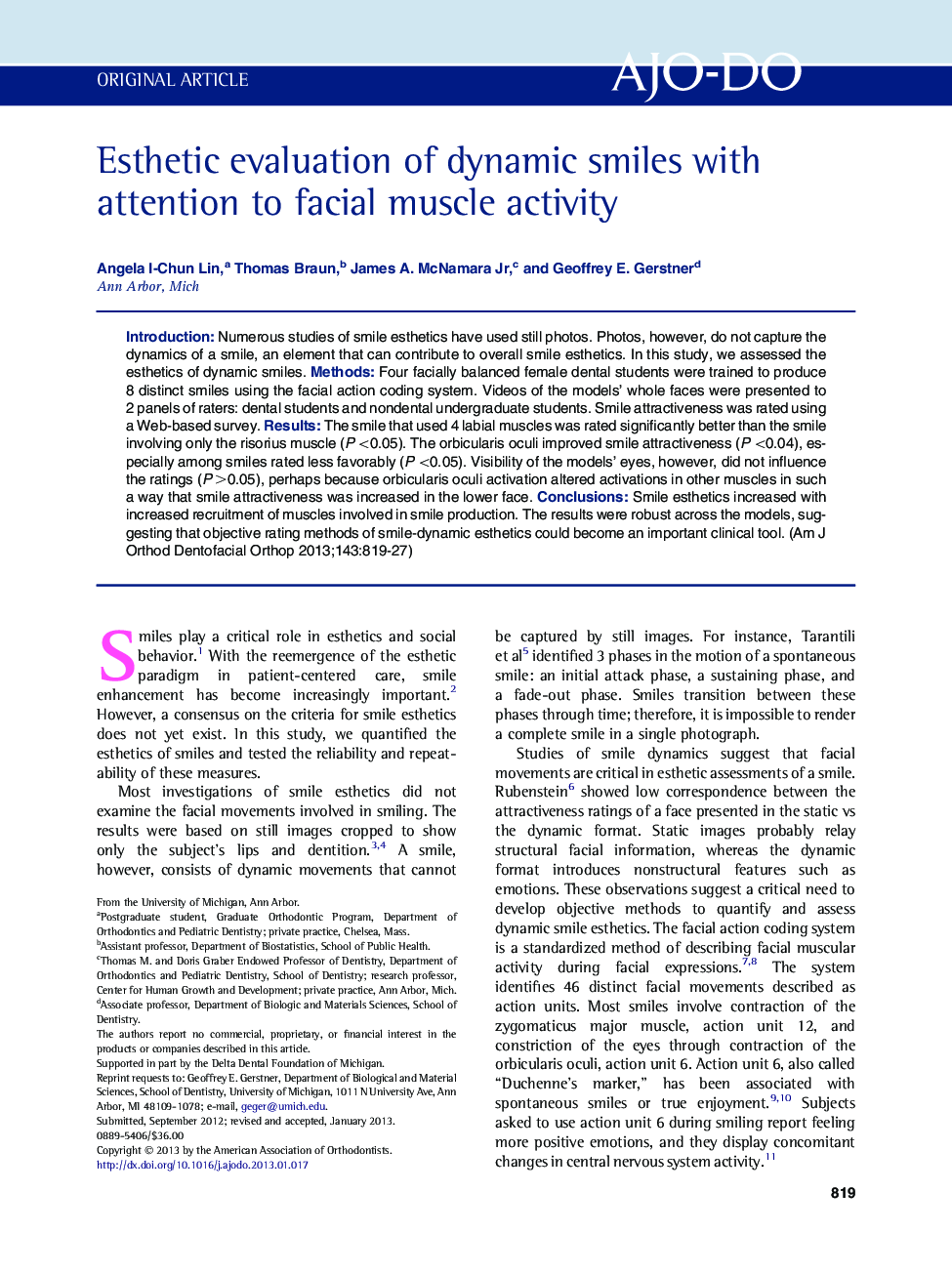| Article ID | Journal | Published Year | Pages | File Type |
|---|---|---|---|---|
| 3116877 | American Journal of Orthodontics and Dentofacial Orthopedics | 2013 | 9 Pages |
IntroductionNumerous studies of smile esthetics have used still photos. Photos, however, do not capture the dynamics of a smile, an element that can contribute to overall smile esthetics. In this study, we assessed the esthetics of dynamic smiles.MethodsFour facially balanced female dental students were trained to produce 8 distinct smiles using the facial action coding system. Videos of the models’ whole faces were presented to 2 panels of raters: dental students and nondental undergraduate students. Smile attractiveness was rated using a Web-based survey.ResultsThe smile that used 4 labial muscles was rated significantly better than the smile involving only the risorius muscle (P <0.05). The orbicularis oculi improved smile attractiveness (P <0.04), especially among smiles rated less favorably (P <0.05). Visibility of the models’ eyes, however, did not influence the ratings (P >0.05), perhaps because orbicularis oculi activation altered activations in other muscles in such a way that smile attractiveness was increased in the lower face.ConclusionsSmile esthetics increased with increased recruitment of muscles involved in smile production. The results were robust across the models, suggesting that objective rating methods of smile-dynamic esthetics could become an important clinical tool.
